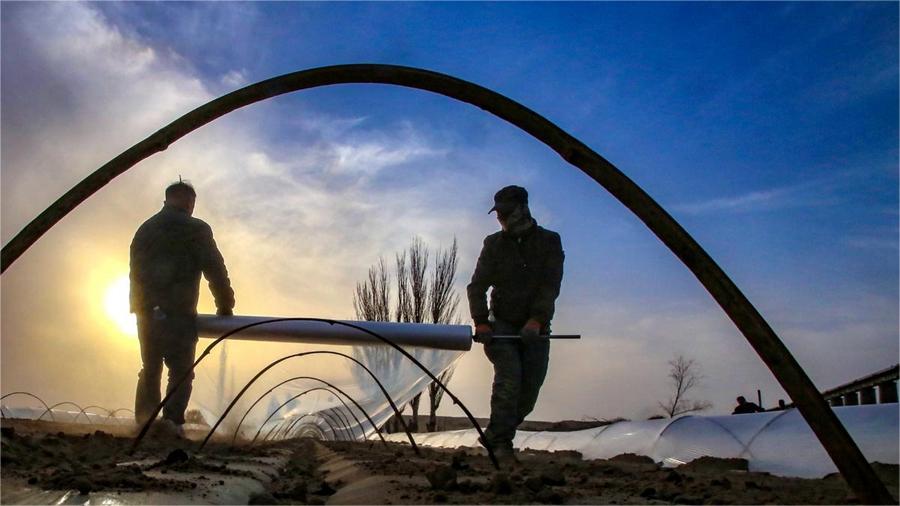Village doctors safeguard health in China's mountainous Guizhou
GUIYANG, March 30 (Xinhua) -- Before 8 o'clock in the morning, 48-year-old village doctor Lei Zhaojin arrives at a health clinic in southwest China's Guizhou Province. She promptly dons her white coat and begins attending to the patients who are waiting.
Lei has worked at Duoding community clinic in Weng'an County after her graduation in 1998. Mountainous and hilly areas account for 92.5 percent of the province's total land area.
Her daily routine includes conducting consultations and intravenous therapy as well as performing massage therapy, among other medical services. Currently, three village doctors are working at the clinic.
Village doctors, safeguarding the health of rural residents, are playing a key role in the healthcare of China's vast rural areas. They travel door to door to answer patients' calls, especially for those who live in hard-to-reach hamlets.
In China, there are over 1.3 million village doctors like Lei. They are considered health guardians in towns and villages, offering emergency response and medical support.
Besides diagnosing common illnesses, their main responsibilities include managing the health of patients with chronic conditions, handling infectious disease reporting, and conducting health check-ups for the elderly, among other public health services.
Lei's home is only about 300 meters away from the clinic. But she hangs an LED display screen at her doorstep, showing her contact information. "I am ready to serve the villagers 24 hours a day," Lei said.
Like Lei, 55-year-old village doctor Luo Haixiang has been working at a community clinic in Baigu Village in Guizhou for 38 years.
After graduation from a medical school in 1986, Luo returned home and served as a village doctor. To make home visits easier, she even bought a car five years ago. "Now it's much more convenient," said Luo.
This year, her village has more than 140 villagers diagnosed with hypertension, with their blood pressure having to be monitored regularly, and nine diabetic patients under supervision. In addition, more than 200 elderly people are given health examinations once every year.
To keep them healthy, Luo opts to conduct public health services by visiting villagers during the early morning and late evening hours, as these times coincide with when the majority of villagers are likely to be at home.
Currently, she goes out for home visits about four times a week, and sometimes she has to go out every day of the week to carry out public health work.
"The busiest work throughout the year is still conducting public health services. In remote mountainous areas, the distances between households are very far," she said.
In order to enhance the sense of achievement among village doctors and further encourage them to safeguard the health of rural communities, China continues to take targeted measures.
This year, the National Health Commission (NHC) will continue to foster more medical talents for rural areas and expand the enrollment size of medical students trained for rural areas with free tuition.
Meanwhile, training programs will also be organized to enhance the diagnosis, treatment, and health management abilities of existing health personnel in China's rural areas, according to the NHC.
Photos
Related Stories
- Huajiang grand canyon bridge under construction in SW China's Guizhou
- Zangke River bridge on Nayong-Qinglong Expressway under construction in SW China
- Baishuihe bridge on Nayong-Qinglong Expressway under construction in SW China
- Sama Festival celebrated in Guizhou
- Village Super League Finals underway in SW China
Copyright © 2024 People's Daily Online. All Rights Reserved.









